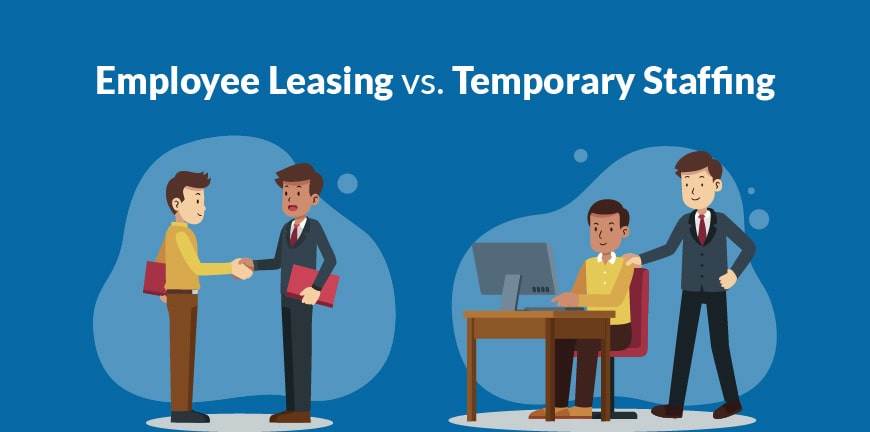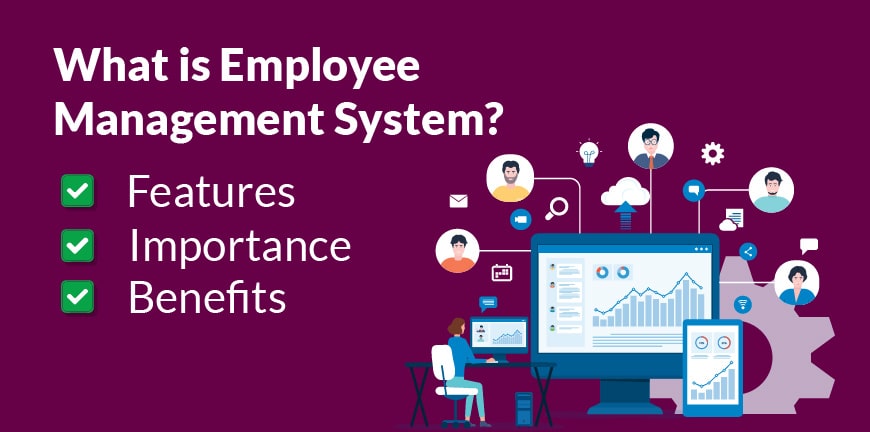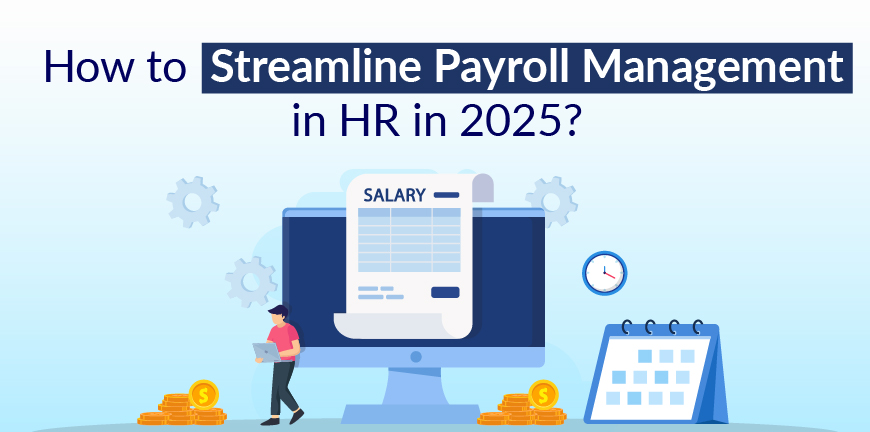
Employee Leasing vs. Temporary Staffing
10/10/2023
Apprenticeship Diversity: Building a Skilled Workforce
13/10/2023Managing the aspect of payroll is an important function of HR, perhaps the most crucial, if you ask an employee. Payroll is the process of tracking an employee’s work hours, analysing the work patterns, calculating tax at source and then paying the employee regularly for the work done.
There’s a lot that goes behind the scenes of this disbursal. An employee payroll management system is what is responsible for it. And today, as high as 91% of respondents in a Deloitte survey use a payroll management system. Let us now look at the definition of a payroll management system.
What Is a Payroll Management System?
An employee payroll management system is software that is on-premises or on the cloud which manages, maintains and automates the payment to employees. It is interesting to note that in the same survey, a whopping 71% of respondents confirmed that they were using cloud-based payroll management systems.
A payroll management system may be administered by a single person or a group of people, usually belonging to the payroll team. It is a function of HR, but in these days, companies have a dedicated payroll team for administering payroll and for managing its many functions.
Functions of Payroll Management System
The payroll process is divided into three phases. The pre-process phase, which includes everything before the actual process of calculation of the payroll, processing phase and then then the post-process phase which includes compliance and reporting. Let us look at the individual functions now.
Mapping out payroll policies
Every HR company has policies that govern payroll processing. Examples of some of these policies are rules such as dearness allowance should be a certain amount, travel allowance a certain amount and so on and so forth.
Collecting information
All the payroll data is essentially employee information which spans their entire career and their background too. This information must be obtained in a very secure manner and stored in a discreet way. By allowing an employee self-service portal, it is possible to collect employee information very easily.
Validating information
The collected information then must be validated. For validation, you can check the type of the data and verify against rules. For instance, a data field will have a particular format and you must check for logical inconsistencies too.
Payroll calculations
The payroll calculations are done at this stage. The tax deduction at source is also calculated. Once the tax is deducted and PF and other deductions, if any, are made the salary to be credited is arrived at.
Salary payout
In this stage, the salary is credited to each employee’s account and the record of payment is updated. Any settlements from the previous month are also accounted for from the previous stage. This can be automated to happen on a particular date every month.
Reporting
Payroll reports can be generated. This will give an idea of when the salary credit happens, how quickly it happened, if there were any errors in the process, and if any employees raised any tickets on the platform etc.
Features of an Employee Payroll Management System
A great payroll management system has the following features:
Easy to administer payroll
It is easy to manage the payroll management system, including specifying who has access and what permissions they have, what time the salary should be credited, and to make any special accommodations if need be.
Automated calculation and scheduling of functions
The payroll management system must allow for automated calculation and for scheduling of functions. For instance, if there is a policy update, then the payroll system must be auto configured to work according to the new rules in place.
Employee self-service portal
A lot of the data that the payroll management system needs could be obtained from employees through the employee self-service portal. An employee can always give the most up-to-date details and the risk of human error (if a moderator is present) is also very less.
Override options and direct deposit
There must be ways to override the system in case the employer wants to make a direct payment to the employee, especially if the system has failed. The employer should be allowed to make a direct deposit in the employee’s account as a special case.
Tax forms
The tax deduction forms must be present in the payroll management system so that the people in HR can submit them on behalf of the employees or employees themselves can file for taxes.
Accounting integration
The employee attendance tracking (if any) and payroll management system must integrate well with other employee ERPS and employee management systems.
Unlimited payroll runs each year
Wouldn’t this be great? Some payroll management systems may provide unlimited payroll runs a year, especially for large companies. If you wish to hire actively, you should not let payroll stop you.
Benefits of Payroll Management System
An employee payroll management system offers several benefits to the employer and through them eventually becomes a great solution for everyone on the company’s payroll. Here are the top benefits:
Simplifies payroll functions considerably
A staff payroll management system is an organised system for payroll process implementation. All the functions in a traditional payroll system are there, with the reliability of the cloud.
Improves accuracy of calculation in payroll
A payroll management system helps ensure a high degree of accuracy in payroll calculation, not possible earlier with heavy human supervision and management of the process.
Reduces the need for human supervision to a great extent
The company can reduce the count in the payroll team to a few key individuals and use the resources to hire in other teams that are more crucial to revenue generation, such as sales.
Easier way to ensure compliance as all the rules are built into the system
All the rules for compliance are built into the system. As the rules are updated across countries, the adjustments are made to the system by the provider, who has agreed to ensure compliance.
Can maintain payroll across offices in several regions as the system is in the cloud
On-time salary credits and management of leave requests and reimbursements without any delay all happen thanks to the payroll management system being in the cloud. Processing of requests happens without any delay and there is mostly no downtime in a staff payroll management system.
Limitations of Payroll Management System
An employee payroll management system has its share of limitations. Let us look at some of the most common ways, and basically the only things you really need to worry about
Your payroll partner has access to your data
Your payroll partner could have access to sensitive employee information as the payroll system is in the cloud and they are the ones maintaining it. Usually there is a non-disclosure clause, so you need not worry about it. Even if they have access to employee data, they are bound not to disclose or use the data in any way.
You need to back-up your data in case of downtime or other service issues
Because the servers may be in another region, if there is any service downtime, you cannot immediately get a response and you will need to be ready with a backup of your data if you wish to handle the process manually. Generally, downtime doesn’t last more than a few hours, but what if there is a breach and the data is wiped out? You must be ready with a backup.
You may be overcharged
Don’t fall for features you don’t really need. You need to spend very little depending on what features you need. Shortlist the features that are most important to you and see if you have a payroll management system that offers you the same at a lower cost.
But never compromise on security, and here is where the reputation plays a huge role. Opt for a payroll management system with zero reported inconsistencies in payroll processing so far.
You will need to train your people on it
It is easier to get your people trained on payroll management systems that are more intuitive and easier to manage. But they would need some training on it. Unfortunately, there is no way around this challenge. You would need to opt for a payroll management system that is managed by a company that handles training as well.
How about a payroll management system with no reported inaccuracies and is on-time and always available? What if it is also very intuitive which means that it is easy to use for new users on your team? And lastly, it is managed by an HR company with 25 years of industry experience. You couldn’t ask for more. Thanks to Alp, you still can, as they handle compliance as well!
Why You Need a Payroll Management System or Partner
HR takes care of employee relations, workforce management, upskilling of employees, and recruitment and other requirements in addition to the payroll process itself.
When you have so many things to manage as HR professionals, wouldn’t it be great if you could outsource the more mechanical and operational aspects of it, including payroll to a third party? The answer is yes, and if you find an HR consulting company with more than two decades of experience such as Alp Consulting to assist you, then you could outsource even the more strategic aspects of HR. So, when do we discuss payroll? Please let us know.
FAQs
What is the meaning of payroll management system?
A payroll management system is software that manages the payroll and its compliance and reporting related requirements in a company.
What is employee attendance management system?
An attendance tracking system tracks employee attendance with a login and a logout time.
What are the methods of payroll management system?
There are several functions in a payroll management system. They are mapping out HR policies, collecting employee information, calculating tax deductions and salary, and reporting and compliance.
What are the 5 payroll steps?
The five steps in payroll are establish employer identification number, calculate tax deductions, choose a schedule for payment, calculate gross pay, calculate deduction for each employee, then calculate net pay and pay your employees.




